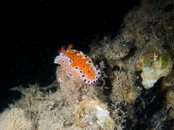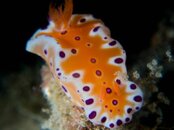Been awhile since I was on this forum so I thought I would drop in.
Anyway I have an Oly OMD EM-5 in the Nauticam housing with the 65 port which is made for the 60mm macro but at times I like to use the 12 - 50mm in this port; however, you can not access the macro function of this lens so you need to use wet lenses / dioptres much the same with the 14 - 42mm if you want to shoot macro images.
Here are a couple of images to show you the difference between no wet lens / dioptre and having one. Both images were shot at the minimum focusing distance and had the same settings of F13 @ 1/100 ISO 200 and twin Sea & Sea YS 110A strobes (snooted) at 2/3 power.
At 50mm

At 50mm with the +6 macro wet lens attached

The wet lens / dioptre allows you to focus closer and the higher the number the stronger it is - basically they are just big magnifying glasses that sit on the front of your housings and essentially they allow you to move closer to the subject.
To use them though, you need to understand that the camera is actually taking a photo of the virtual image created on the glass of the lens - so you need to get that in focus first (i.e. the image in the glass needs to be sharp) before you focus the camera.
This is easy to do all you do is move you camera in close until the image in the LCD screen becomes sharp (or move it back a bit) and when it is then you focus the camera.
Hope this helps.
Karl



